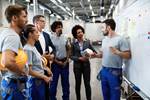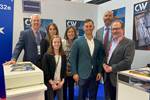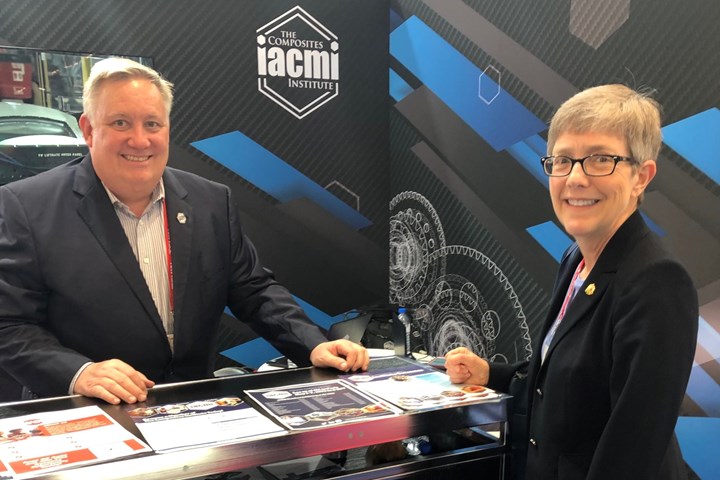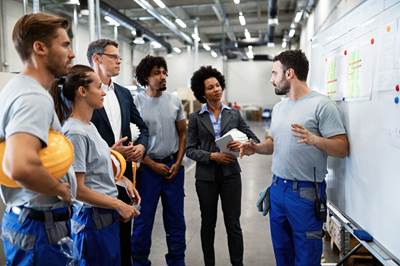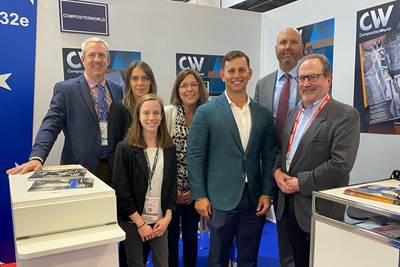Impressions and takeaways from JEC World 2022
Suffice to say that JEC World 2022, the “Big Show” for the composites industry, exceeded many expectations. Dale Brosius contemplates pervasive themes, conversations and takeaways from the international event.
The first victim of the COVID-19 pandemic for the composites market was the cancellation of JEC World in March 2020. Official notice of the cancellation, which, at the time, was posited as simply a postponement due to the unknown trajectory of the virus, came only six days prior to the show opening. The decision — in retrospect the correct course of action — would lead to cancellation of the 2020 and 2021 in-person events due to the length of the pandemic and various global restrictions. So, when the 2022 version of JEC World, already rescheduled from March to May, finally went off with barely a hitch, it marked a major milestone for the global composites industry.
At the start, there were plenty of questions. How well would JEC World be attended? The pandemic, while not as catastrophic as it was in 2020, is still not over and variants continue to circulate. At the time of JEC World, China remained in a near total lockdown. How well aligned would exhibitors and attendees from various countries be with respect to today’s challenges? How would interaction with folks from other countries I, and others, haven’t seen in person for over two years — and in most cases, three years — go when we sat down and discussed ideas for collaboration?
According to JEC’s figures, more than 32,000 visitors, mostly in person (there was a parallel virtual version), came together in Paris to visit 1,200 exhibitors. While both figures are down from 2019, the event seemed to be quite vibrant and exceeded most expectations, based on my conversations.
Prior to its opening, I was curious to know what would be on display on the show floor. Walking around, I still saw a few stands with “shiny carbon fiber” automotive body panels, which, frankly, felt so 2019. I assume some of these exhibitors really focus on the supercar segment or used the same displays they planned to use in 2020. On the other hand, there were numerous stands promoting materials, machinery or molded parts for vehicle electrification (EV battery enclosures), pressure vessels for storing hydrogen, urban air mobility (UAM) vehicles and spar caps for ultra-long wind turbine blades. And while 2019 (and I suspect 2020 also) would have promoted the available forms of recycled carbon fibers, this year showed downstream intermediates and molded parts from recycled fibers, proving that the circular economy is truly emerging.
This JEC World event was a much needed reunion for a composites industry in transition.
Along these lines, there was a pervasive theme of sustainability in the on-stage programming, to complement what was on display on the show floor. There was a focus on how composites contribute to lower CO2 emissions, cleaner energy generation, resilience and longer life in the face of changing climate impacts. Further, how these materials can be produced with lower energy and then recycled into useful products certainly felt on the mark. I moderated a session featuring Airbus (Toulouse, France) discussing hydrogen-fueled passenger planes and Ford (Detroit, Mich., U.S.) showing composite chassis components to reduce the mass of internal combustion and battery electric vehicles (BEVs). So, to answer my second question, the industry — and the world — does seem aligned to today’s challenges.
I had a conversation with a leading European automaker about the future of carbon fiber. Beyond the obvious cost issues, the challenge now is about the high CO2 footprint of fiber manufacture, adding a second reason for carmakers to shy away from using it. The wind market has learned to strategically place carbon fiber in only the spar caps, and a turbine returns all the energy required to make and install it in a matter of months. Aerospace, including the emerging UAM market, can continue to make the case to employ carbon fiber structures as this greatly reduces emissions and enables battery powered flight. The U.S. Department of Energy (DOE) has an “Earthshot” to deliver clean hydrogen at $1 per kilogram in one decade, an 80% reduction in cost compared to today. I suggest we need a similar program for carbon fiber, focused on reducing the CO2 footprint by 80% or more in a similar time frame. Bio-based polyacrylonitrile (PAN), dry spinning, electric furnaces using clean energy and carbon capture might play roles in developing a solution, especially for industrial markets like automotive.
Finally, I was truly pleased to catch up with colleagues from innovation institutes in the U.K., Germany, Korea and other countries, all of whom have had to deal with the pandemic in their own ways. Our discussions revealed we are all nominally on the same page with the challenges before us. While progress is being made, we are still a long way from the real goals, and funding for international collaboration needs to be brought forth to accelerate innovation, demonstration and, ultimately, widespread deployment. On the whole, this JEC World event was a much needed reunion for a composites industry in transition.
Related Content
Bio-based acrylonitrile for carbon fiber manufacture
The quest for a sustainable source of acrylonitrile for carbon fiber manufacture has made the leap from the lab to the market.
Read MorePlant tour: Joby Aviation, Marina, Calif., U.S.
As the advanced air mobility market begins to take shape, market leader Joby Aviation works to industrialize composites manufacturing for its first-generation, composites-intensive, all-electric air taxi.
Read MoreRecycling end-of-life composite parts: New methods, markets
From infrastructure solutions to consumer products, Polish recycler Anmet and Netherlands-based researchers are developing new methods for repurposing wind turbine blades and other composite parts.
Read MoreInfinite Composites: Type V tanks for space, hydrogen, automotive and more
After a decade of proving its linerless, weight-saving composite tanks with NASA and more than 30 aerospace companies, this CryoSphere pioneer is scaling for growth in commercial space and sustainable transportation on Earth.
Read MoreRead Next
The other composites industry supply chain challenge: Talent
A major topic of discussion during in-person events this year revolved around supply chain disruptions, as well as cultivating new employees. Now, more than ever, it’s important to spread the word on composite industry’s positive collective future.
Read MoreWhat to make of the first JEC World in three years
CW went to JEC World 2022 not sure what to expect. We were pleasantly surprised, and learned much about where and how new composites technologies are being developed.
Read MoreIACMI names Dale Brosius as Interim CEO
Effective April 1, Brosius will take on the new interim role while continuing his roles as CCO, Executive Director of the IACMI Consortium and chair of the IACMI Consortium Council.
Read More
